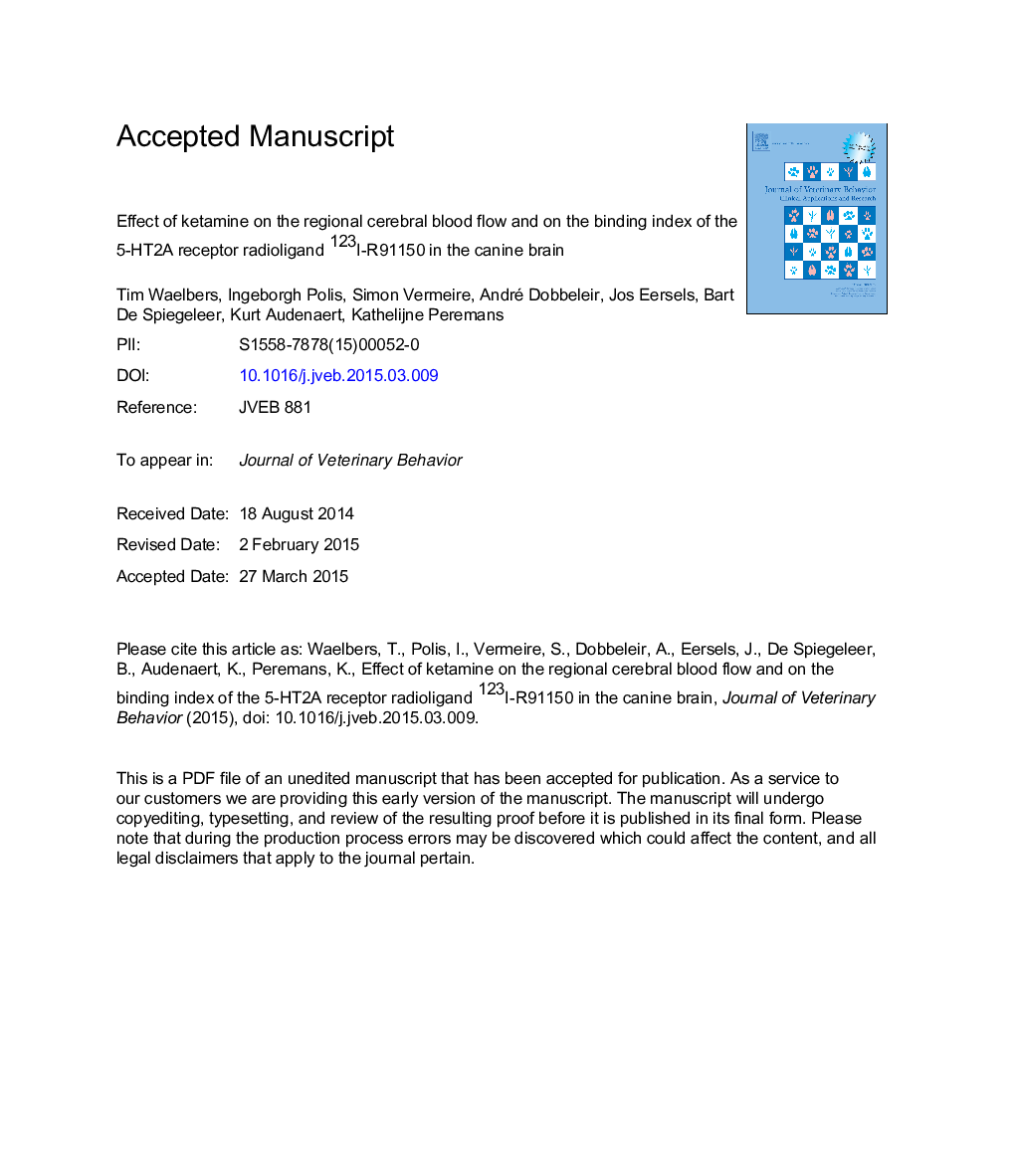| Article ID | Journal | Published Year | Pages | File Type |
|---|---|---|---|---|
| 10961773 | Journal of Veterinary Behavior: Clinical Applications and Research | 2015 | 36 Pages |
Abstract
Ketamine, a dissociative anesthetic frequently used in veterinary medicine, possesses rapid-acting antidepressant effects in humans possibly indicating an interaction with the cerebral perfusion or with the serotonergic system. In this single-photon emission computed tomography study, 7 healthy dogs were used to investigate the influence of ketamine on the regional cerebral blood flow using technetium-99m-ethyl cysteinate dimer and on the binding of the 5-hydroxytryptamine 2A receptor radioligand iodine-123 labeled R91150 in the canine brain. Ketamine increased the regional perfusion in the left frontal cortex and right parietal cortex. Significant changes in the distribution of iodine-123 labeled R91150 were not observed. This study demonstrated an acute effect of ketamine on the regional brain perfusion but not on the 5-hydroxytryptamine 2A receptors in the canine brain in the dose used in this study.
Related Topics
Life Sciences
Agricultural and Biological Sciences
Animal Science and Zoology
Authors
Tim Waelbers, Ingeborgh Polis, Simon Vermeire, André Dobbeleir, Jos Eersels, Bart De Spiegeleer, Kurt Audenaert, Kathelijne Peremans,
